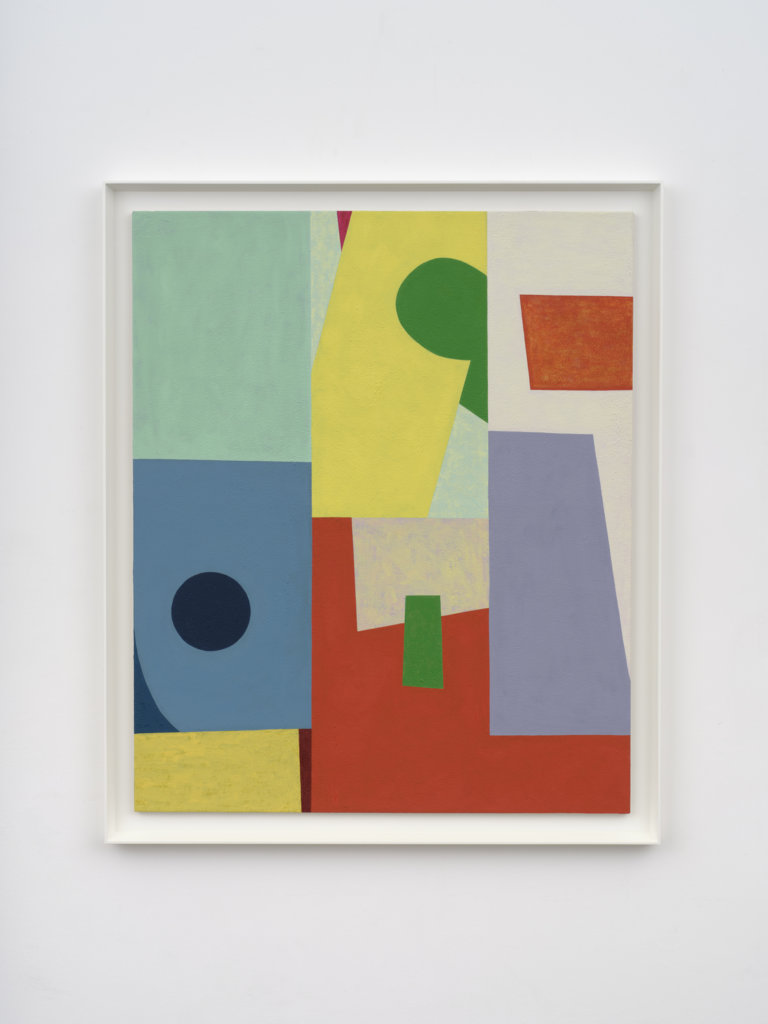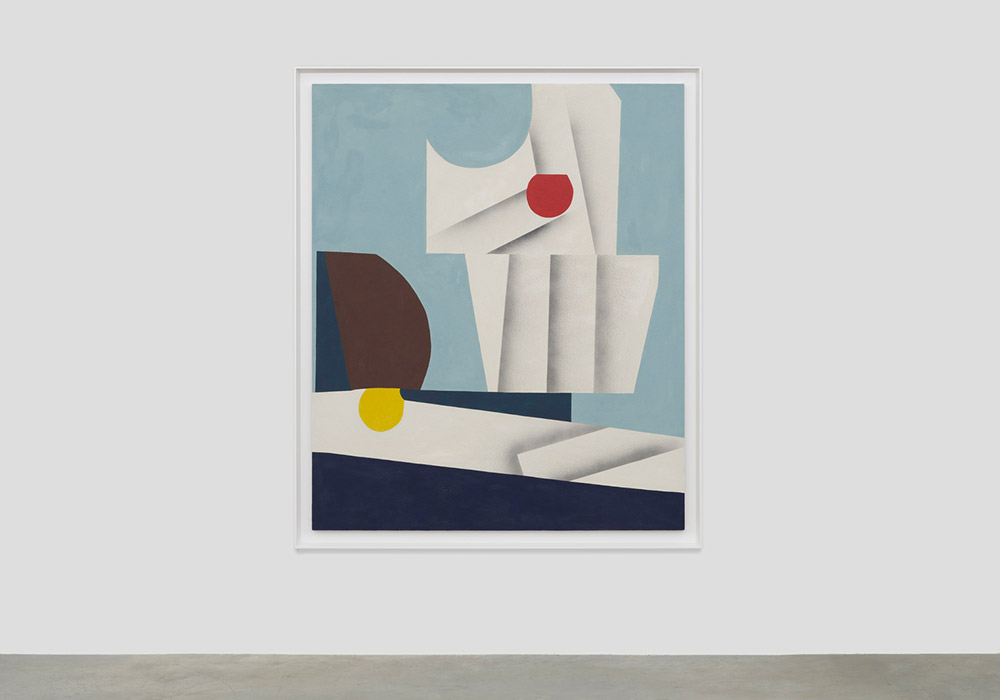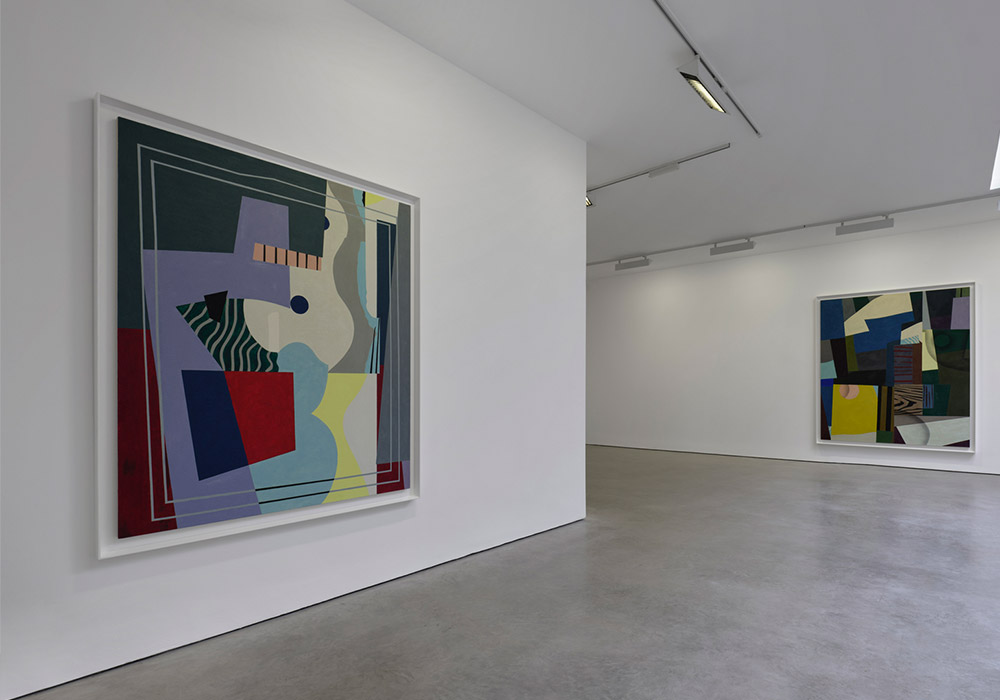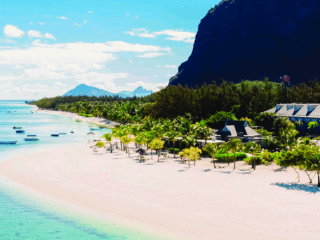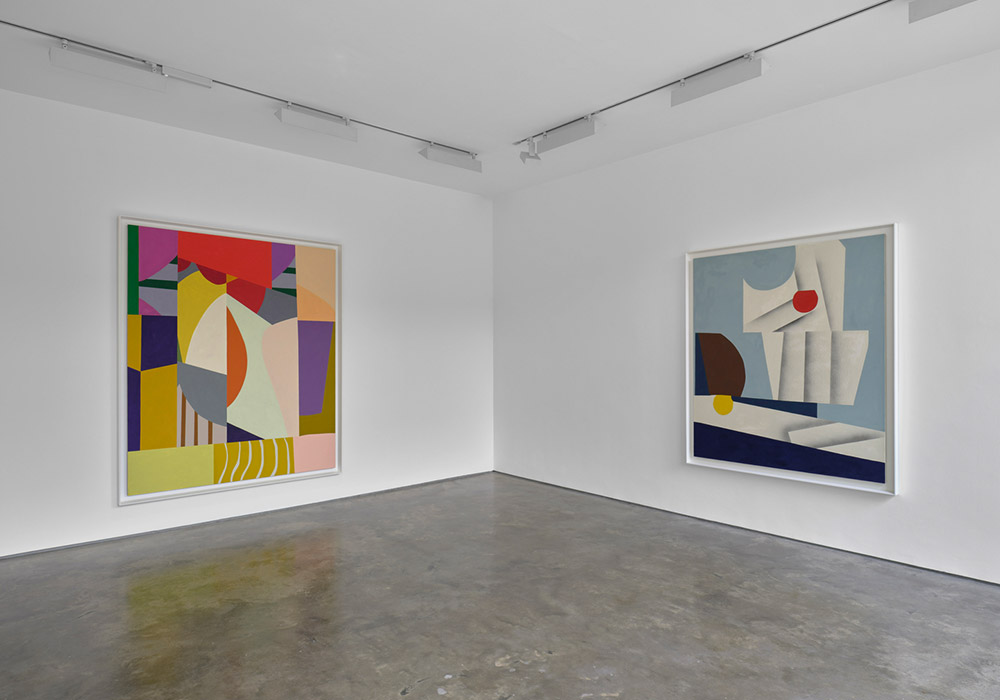
Painting Rocks by Rodney Graham
11.05.2226 April – 25 June 2022
67 Lisson Street, London
My artistic trajectory had previously followed the Duchamp path, really, so Picasso was a late discovery. I started looking at him seriously and became a little bit obsessed, specifically with the classic period of Cubism, 1911-1914
Rodney Graham returns to London for his thirteenth show with Lisson Gallery, exhibiting a new suite of paintings developed from a series begun with an online exhibition, Painting Problems two years ago. While an inveterate and self-confessed appropriator in the Duchampian mode, Graham has now entered a self-reflexive mode of painting, drawing from his own past projects, rather than wholly from art historical precedent.
GRAR220008
Rodney Graham
Untitled, 2022
Oil and sand on linen
147.3 x 121.9 cm
58 x 48 in
© Rodney Graham. Courtesy Lisson Gallery
Through layering and superimposition, Graham achieves the painterly equivalent of an all-over Cubism in the largest of these new paintings, with the introduction of quasi-recognisable objects or symbols – a button, a keyboard, a zebra stripe – simultaneously flattening and adding realistic depth to the compositions. His technique of re-incorporating or stitching together motifs from previous bodies of painting perhaps adds to the familiarity of form, through which Graham finds his own harmonic, graphic outcome.
GRAR220015
Rodney Graham
Untitled, 2022
Oil and sand on linen
182.9 x 152.4 x 3.4 cm
72 x 60 x 1 1/4 in
© Rodney Graham. Courtesy Lisson Gallery
‘The system we developed to achieve this depth, through airbrushing and spray painting, was to take a fragment of a larger template that I created – if you look from one to the other you might see a simple shape recurring. This was then overlaid and spray painted over with a kind of a shadow effect that evokes, I guess, in a graphic way, the techniques of Analytic Cubism.’
Although best known for his conceptual practice as a photographer and installation artist, Graham, has often turned to painting, in the first instance for his 2007 exhibition, Wet on Wet: My Late Early Styles. Then generated from examples of abstract artists including Francis Picabia or Jean Arp, he moved on to Morris Louis-style drip painting, then shaped canvases and multipartite painting, before embarking on impastoed, midcentury modernist works in the manner of artists such as Lucio Fontana.
GRAR220002
Rodney Graham
Untitled, 2022
Oil and sand on linen
188 x 226 x 3.8 cm
74 x 88 7/8 x 1 1/2 in
© Rodney Graham. Courtesy Lisson Gallery
More recent works started with an example of Alexander Rodchenko, which was endlessly cut-and-pasted, rotated and transformed in Photoshop before becoming unrecognisable as source material. The current body of works owe as much to Matisse as they do Picasso, with windows, openings and guitar shapes all coalescing into view. While his ‘late early styles’ could have been considered ironic experimentation with a post-medium condition, Graham has now developed his own ‘mature’ expression as a painter from a position of experience and prolonged studio practice.
About the artist
Rodney Graham pulls at the threads of cultural and intellectual history through photography, film, music, performance and painting. He presents cyclical narratives that pop with puns and references to literature and philosophy, from Lewis Carroll to Sigmund Freud to Kurt Cobain, with a sense of humour that betrays Graham’s footing in the post-punk scene of late 1970s Vancouver. The nine-minute loop Vexation Island (1997) presents the artist as a 17th-century sailor, lying unconscious under a coconut tree with a bruise on his head; after eight and a half minutes he gets up and shakes the tree inducing a coconut to fall and knock him out, and for the sequence to start again. Graham returns as a cowboy in How I Became a Ramblin’ Man (1999) and as both city dandy and country bumpkin in City Self/Country Self (2001) – fictional characters all engaged in an endless loop of activity. Such dream states and the ramblings of the unconscious are rooted in Graham’s earlier upside-down photographs of oak trees. Inversion, Graham explains, has a logic: ‘You don’t have to delve very deeply into modern physics to realise that the scientific view holds that the world is really not as it appears. Before the brain rights it, the eye sees a tree upside down in the same way it appears on the glass back of the large format field camera I use.’ (2005)
Rodney Graham was born in Abbotsford, British Columbia, Canada in 1949. He graduated from the University of British Columbia, Burnaby, Canada in 1971 and lives and works in Vancouver, Canada. Solo exhibitions include Serlachius Museum Gösta, Mänttä, Finland (2020); Museum Frieder Burda, Baden-Baden, Germany (2017); Museum Voorlinden, Wassenaar, Netherlands (2017); BALTIC Centre for Contemporary Art, Gateshead, UK (2017); Le Constortium, Dijon, France (2016); Sammlung Goetz, Munich, Germany (2015); Charles H. Scott Gallery, Emily Carr University of Art and Design, Vancouver, Canada (2014); Vancouver Art Gallery, Canada (2012); Museum der Moderne, Salzburg, Austria (2011); Museu D’Art Contemporani de Barcelona, Spain (2010); Jeu de Paume, Paris, France (2009); Museum of Contemporary Art Los Angeles, CA, USA (2004); Whitechapel Art Gallery, London, UK (2002); Hamburger Bahnhof, Berlin, Germany (2001); and Kunsthalle Wien, Vienna, Austria (1999). He has participated in group exhibitions such as the Carnegie International (2013), the 13th, 14th and 17th Sydney Biennales, Australia (2002, 2006, 2010), the Whitney Biennial, New York, USA (2006) and the Biennale d’Art contemporain de Lyon, France (2003). He represented Canada at the 47th Venice Biennale, Italy (1997) and among awards he has received the Gershon Iskowitz Prize, Toronto, Canada (2004), the Kurt Schwitters-Preis, Niedersächsiche Sparkassenstiftung, Germany (2006), and the Audain Prize for lifetime achievement in visual arts, British Columbia, Canada (2011). Rodney Graham was appointed as an Officer of the Order of Canada in 2016 for his contributions to Canadian contemporary art.
About Lisson Gallery
Lisson Gallery is one of the most influential and longest-running international contemporary art galleries in the world. Today the gallery supports and promotes the work of more than 60 international artists across two spaces in London, three across New York City and East Hampton, and one in Shanghai. Established in 1967 by Nicholas Logsdail, Lisson Gallery pioneered the early careers of important Minimal and Conceptual artists, such as Art & Language, Carl Andre, Daniel Buren, Donald Judd, John Latham, Sol LeWitt, Richard Long and Robert Ryman among many others. It still works with many of these artists as well as others of that generation from Carmen Herrera to the renowned estates of Leon Polk Smith, Ted Stamm and Roy Colmer.
In its second decade the gallery introduced significant British sculptors to the public for the first time, including Tony Cragg, Richard Deacon, Anish Kapoor, Shirazeh Houshiary and Julian Opie. Since 2000, the gallery has gone on to represent many more leading international artists such as Marina Abramović, Ai Weiwei, John Akomfrah, Susan Hiller, Tatsuo Miyajima and Sean Scully. It is also responsible for raising the international profile of a younger generation of artists led by Cory Arcangel, Ryan Gander, Haroon Mirza, Laure Prouvost, Pedro Reyes, Wael Shawky, Hugh Hayden, Van Hanos and Cheyney Thompson.
For press enquiries, please contact
Victoria Mitchell, Head of Communications
+44 (0)207 724 2739
victoria@lissongallery.com
i: @lisson_gallery
t: @Lisson_Gallery
fb: LissonGallery
Abode Affiliates
COPYRIGHT © Abode2 2012-2024





